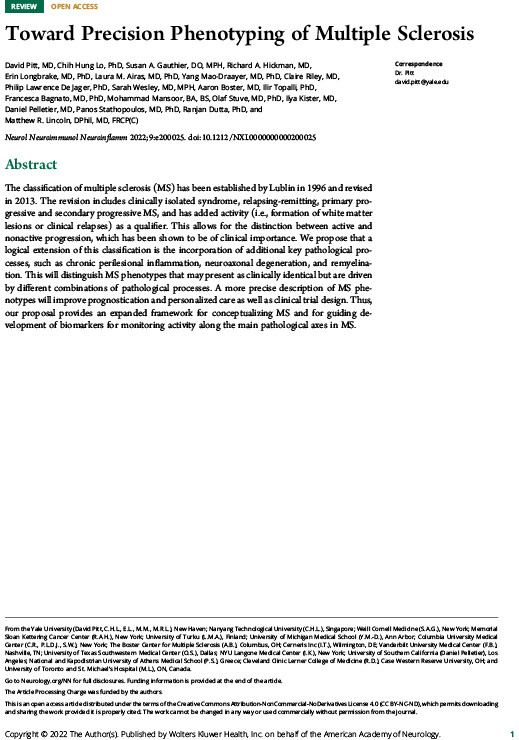Toward Precision Phenotyping of Multiple Sclerosis
Nov 22
Abstract
The classification of multiple sclerosis (MS) has been established by Lublin in 1996 and revised in 2013. The revision includes clinically isolated syndrome, relapsing-remitting, primary progressive and secondary progressive MS, and has added activity (i.e., formation of white matter lesions or clinical relapses) as a qualifier. This allows for the distinction between active and nonactive progression, which has been shown to be of clinical importance. We propose that a logical extension of this classification is the incorporation of additional key pathological processes, such as chronic perilesional inflammation, neuroaxonal degeneration, and remyelination. This will distinguish MS phenotypes that may present as clinically identical but are driven by different combinations of pathological processes. A more precise description of MS phenotypes will improve prognostication and personalized care as well as clinical trial design. Thus, our proposal provides an expanded framework for conceptualizing MS and for guiding development of biomarkers for monitoring activity along the main pathological axes in MS.

